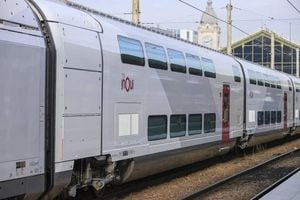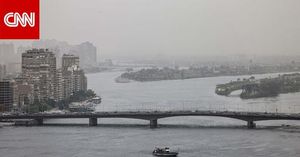Immigration has taken center stage in Canadian politics as Prime Minister Mark Carney announced a snap federal election scheduled for April 28, 2025. This announcement has ignited debates across party lines, with immigration policies becoming a crucial topic as parties prepare their platforms. Carney, who recently succeeded Justin Trudeau as the leader of the Liberal Party, is leveraging a surge in public support driven by fears regarding former U.S. President Donald Trump's potential return to power and rising right-wing populism globally.
Carney's first major act as Prime Minister was to replace Marc Miller with Rachel Bendayan as Immigration Minister, signaling a clear shift in priorities from the previous administration. The Liberal government had initially aimed for ambitious immigration targets, increasing the number of permanent residents from 260,000 in 2015 to a goal of 500,000 by 2025. However, public sentiment has shifted dramatically due to a cost-of-living crisis, soaring inflation, and an overwhelmed housing market, leading many Canadians to question the feasibility of such rapid population growth.
Statistics Canada reported a staggering increase of 430,635 people in just three months by 2023, marking a 1.1% surge—the fastest growth rate since the post-war baby boom. Yet, as the population swelled, public opinion seemed to sour on immigration, prompting the Liberals to execute a significant policy reversal. Before his replacement, Miller made drastic cuts to international student numbers and imposed a cap on student visas to ease housing demand. In a historic pivot, he also reduced Canada’s annual permanent resident target to 365,000 by 2027, a move that has drawn sharp criticism.
As the election approaches, immigration has morphed into a litmus test for the future of Canada, economically and socially. Each major political party has laid out its stance on immigration:
- Liberal Party of Canada – Mark Carney: The Liberals are committed to admitting 395,000 new permanent residents in 2025, emphasizing immigration as a pillar of economic resilience. Their goals include prioritizing economic-class immigrants, streamlining transitions from temporary to permanent residency, and enhancing family reunification processes.
- Conservative Party of Canada – Pierre Poilievre: Poilievre supports immigration for skilled workers but argues that the current pace is unsustainable without adequate housing and infrastructure. The Conservatives propose a temporary reduction in immigration numbers while focusing on skilled talent and improving immigration processes.
- New Democratic Party (NDP) – Jagmeet Singh: The NDP advocates for a people-first immigration model, calling for reforms to protect vulnerable newcomers and increase refugee intakes.
- Bloc Québécois – Yves-François Blanchet: The Bloc emphasizes Quebec’s autonomy in immigration, advocating for full provincial control over immigration decisions and preference for French-speaking applicants.
- Green Party of Canada – Elizabeth May & Jonathan Pedneault: The Greens are pushing for an ethical immigration system that addresses climate-driven migration and simplifies pathways to permanent residency.
Amidst these discussions, a troubling trend has emerged: in 2024, Canada denied a record 2.36 million temporary resident visa applications, marking a 50% rejection rate, a significant rise from the previous year. This increase spans various visa categories, with visitor visas experiencing a 54% rejection rate and study permits facing a 52% rejection rate. Immigration experts attribute these high rejection rates to the government’s intensified efforts to enforce stricter eligibility criteria, particularly for international students.
In the midst of this political turmoil, a recent Leger poll conducted between March 21 and March 23, 2025, revealed that 44% of surveyed voters would choose the Liberal Party, compared to 38% for the Conservatives, with the NDP trailing at a mere 6%. Furthermore, 48% of respondents believe the Liberals will win the election, reflecting a significant turnaround in support for Carney since he took over the leadership in early March.
As the campaign unfolds, both Carney and Poilievre are making bold promises to attract voters. Carney, campaigning in Halifax, has pledged to modernize military recruitment by increasing salaries and building more on-base housing. In contrast, Poilievre has vowed to eliminate the GST on new homes priced up to $1.3 million, potentially saving homebuyers up to $65,000.
Interestingly, the NDP has also made headlines with their tax plans aimed at working families, which include eliminating the GST on essentials and increasing the Basic Personal Amount to $19,500. Singh argues that these measures are necessary to combat the ongoing affordability crisis.
In recent campaign stops, Carney has faced scrutiny regarding his connections to Brookfield Asset Management, as Poilievre accused him of negotiating a $276 million loan from the Bank of China while serving as an economic adviser to Trudeau. Carney has firmly denied these allegations, emphasizing his commitment to transparency and accountability.
As the election date approaches, the political landscape remains fluid, with immigration policies taking center stage in the national discourse. The outcome of this election could redefine Canada’s immigration system, impacting the lives of countless individuals and shaping the nation’s future.
In the midst of these developments, the Liberal Party has also faced internal challenges, including the disqualification of former leadership candidate Chandra Arya, linked to a controversial trip to India. Arya's exclusion from the race raises questions about the party's integrity and the implications for Carney's campaign.
As voters prepare to head to the polls, the stakes have never been higher. The upcoming election will not only determine the next Prime Minister but will also set the course for Canada’s immigration policies and broader socio-economic landscape.






